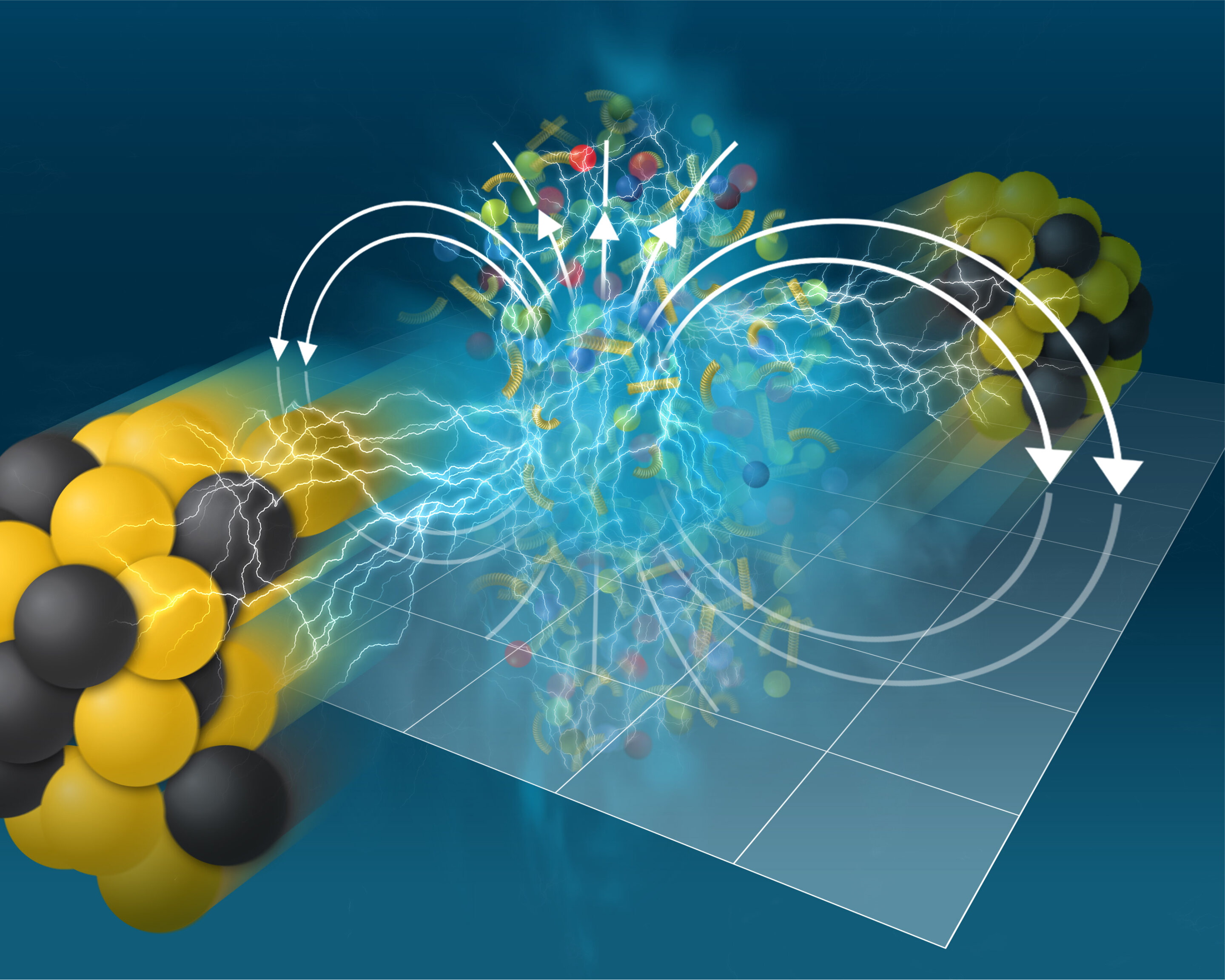A recent study conducted by the STAR collaboration at the Relativistic Heavy Ion Collider (RHIC), a particle collider at the U.S. Department of Energy’s (DOE) Brookhaven National Laboratory, has revealed the initial evidence of the impact of the universe’s most potent magnetic fields on “deconfined” nuclear matter. This evidence was obtained by observing the way differently charged particles separate after collisions of atomic nuclei at this DOE Office of Science user facility.
These findings offer scientists a novel approach to investigate the electrical conductivity of “quark-gluon plasma” (QGP) and gain a deeper understanding of the fundamental components of atomic nuclei.
“This marks the first time we have measured the interaction between the magnetic field and the quark-gluon plasma (QGP),” stated Diyu Shen, a STAR physicist from Fudan University in China and a key figure in the new analysis. This measurement provides direct evidence of the existence of these powerful magnetic fields.
For a long time, scientists have theorized that off-center collisions of heavy atomic nuclei, such as gold, would produce intense magnetic fields. This is due to the fact that some of the non-colliding positively charged protons, as well as neutral neutrons, that constitute the nuclei would be set in motion as the ions brush past each other at nearly the speed of light.
“These rapidly moving positive charges are expected to generate an extremely strong magnetic field, estimated to be 1018 gauss,” explained Gang Wang, a STAR physicist from the University of California, Los Angeles. To put this into perspective, he pointed out that neutron stars, the densest objects in the universe, have fields of about 1014 gauss, while refrigerator magnets produce a field of about 100 gauss, and our planet’s protective magnetic field measures a mere 0.5 gauss.
2024-02-25 02:00:04
Post from phys.org
